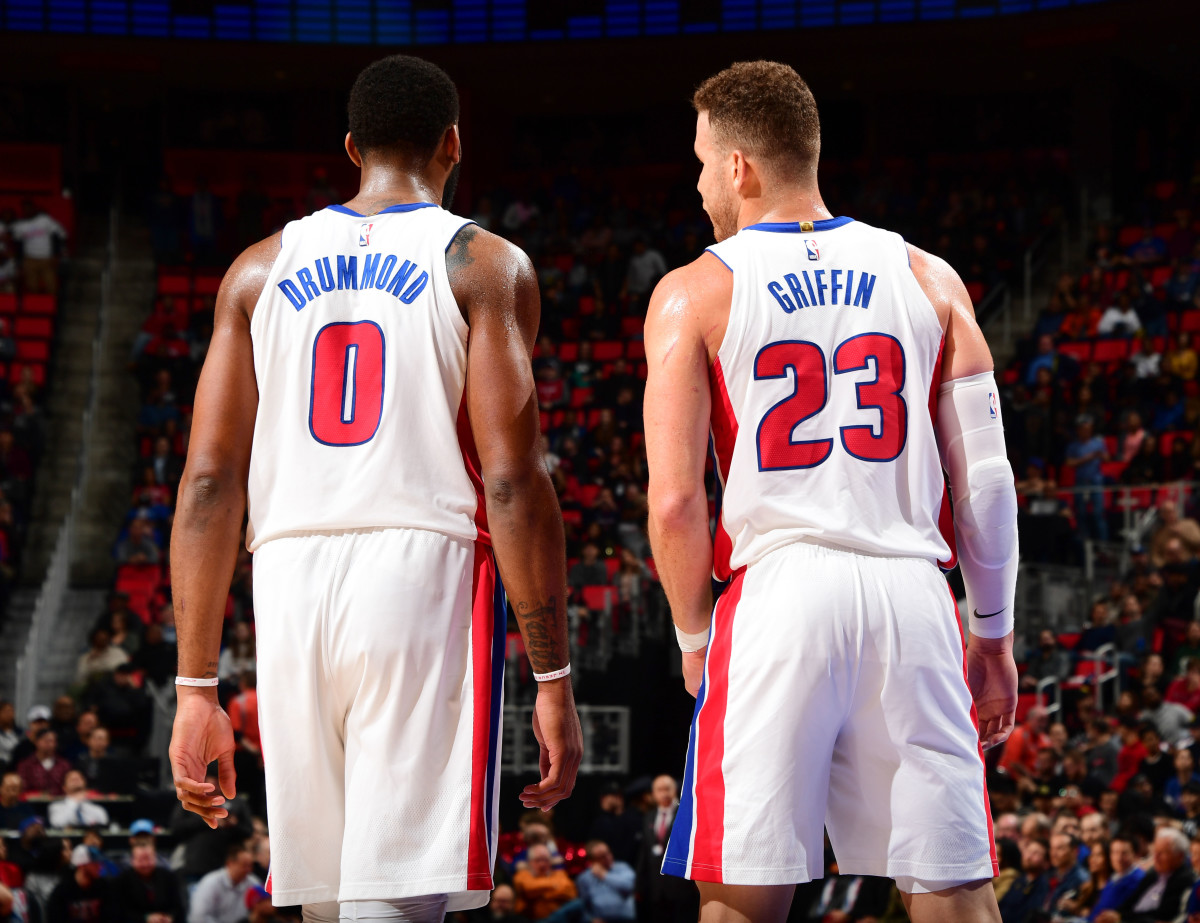The Problem with the Pistons' Blake Griffin Experiment

The early returns on the Pistons’ surprising Blake Griffin trade were promising. Detroit won its first four games with Griffin in the lineup, with the five-time All-Star (and one-time Clipper For Life) scoring at least 20 points in three of those contests. Looking primed for a playoff push, the Pistons soon unexpectedly cratered. Detroit has won only three times since Feb. 9—and two of those wins were against two of the league’s most blatant tankers. The Pistons have lost 12 of their last 15 games to ruin their postseason hopes, and their risky swing on Griffin is looking more and more like a miss instead of a home run.
Watching Griffin, it’s obvious he’s not the same player he was in Los Angeles even just earlier this season. Whether it’s system or motivation, the Detroit version of Griffin too often floats on the perimeter on offense, waiting a little bit too much for the game to come to him instead of taking control of the action. Without a top flight point guard in Chris Paul or the big-to-big chemistry he had with DeAndre Jordan, Griffin’s offense has suffered.
In 33 games with the Clippers this season, Griffin took 53.1% of his shots in the paint. That’s a healthy number for someone who can be a weapon in pick-and-rolls and bully smaller players on the block, but who also has a jumper to keep defenses honest. In 19 games with the Pistons, only 42.5% of Griffin’s shots are coming inside 10 feet. The majority of that difference has come in pull-up jumpers, on which Griffin has a 34.2% effective field-goal percentage in Detroit. Essentially, with the Pistons, instead of working his way into the paint, Griffin is too often settling for bad shots.
Too many Pistons possessions start and end with Griffin milling around the wing. He’s popping more often than he’s rolling after setting screens, all without much conviction. And he just doesn’t seem to have the same will to hammer his way into the paint as he did in his younger days, though the increased number of bodies in his way is definitely a factor.

The talent around Griffin is certainly an issue. The Pistons’ starting lineup of Reggie Bullock, Stanley Johnson, Ish Smith, Griffin and Andre Drummond has a 3.5 net rating, but their modest success is predicated mostly on defense. Smith and Johnson can’t space the floor with their shooting, which is compounded by the fact that the Pistons are playing two bigs. Bullock has been great from three, but he’s not scaring opponents with other facets of his repertoire. There’s simply not much room to operate for anyone in this lineup, and that’s an adjustment for Griffin, whose L.A. teams always executed at an absurdly high level.
Finding combinations that work has been tough for Stan Van Gundy all season long—of the Pistons' 15 most-used lineups, only three have positive point differentials. The Griffin-Drummond pairing has also been middling at best. There was some hope that Griffin could play off Detroit’s hulking center in a similar fashion to his partnership with Jordan. That hasn’t been the case so far. The Pistons are actually a minus when both Griffin and Drummond are on the court, with a net rating of negative-0.7. It’s not the worst number, but it’s also not promising considering how many resources Van Gundy has poured into his frontcourt.
While Blake and DeAndre weren’t lighting the world on fire with the Clippers this season, their games were better suited for each other than the Blake-Andre pair. Drummond isn’t as aggressive a rim-runner as Jordan, and though Drummond still commands attention in the paint, his slightly more plodding style can be a bit of a clog for Griffin.
The lack of success with Griffin is troubling, and Detroit has to find a way to make it work. The return of Reggie Jackson could help a little bit, but part of the reason the Pistons leapt for another star was because the team wasn’t succeeding with Jackson as one of its best players.
The All-NBA Debates: Who Deserves to Make the Cut?
Improving the roster after this season is going to be difficult. Griffin and Drummond are making over $56 million combined, and Drummond will likely be hard to move. Detroit is going to be over the cap again next season, and its best assets went to L.A. in the Griffin trade. The Pistons probably won’t have any significant cap room until 2020, and that’s only if Drummond opts out of his deal. By then, Griffin will be 31 with a salary of $36.5 million. And even if given cap room, can Detroit attract free agents? Will Griffin be enough to bring in other stars? After all, on some level the Pistons made the Blake trade because they have difficulty signing players of his stature in the offseason.
While the future is complicated at best, the present is just as concerning in Detroit. Blake Griffin entered this season as a star looking to stake his claim as one of the NBA’s best forwards, someone who could evolve his game and remain successful in the wake of massive changes around him. The changes have kept coming for Griffin, but the success hasn’t always followed. There are still defensible reasons for why the Pistons parted with so much to bring Blake to Detroit. But the risky trade has been decidedly more bust than boom, and the early returns have given way to a disappointing finish to the season.
